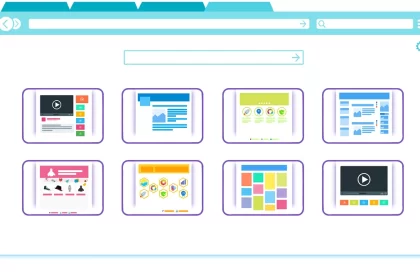Insurance is one of those necessary expenses that can feel like a constant drain on your finances. Whether it’s car insurance, home insurance, or health insurance, the costs add up quickly, and for many women, it can feel like a burden that is hard to manage. However, smart financial moves can help you lower your insurance costs without sacrificing coverage.
In this post, we’ll explore several strategies that can help you save on your insurance premiums, giving you more control over your budget while ensuring you have the protection you need.
1. Shop Around for Better Rates
One of the easiest and most effective ways to lower your insurance costs is to shop around. Many women assume that their current provider offers the best rates, but this isn’t always the case. Insurance companies frequently adjust their rates, and it’s possible that another insurer can offer you a better deal without compromising your coverage.
In fact, using a comparison tool can save you hours of research. Platforms like Coverage Professor allow you to compare quotes from various providers to find the best rates for your specific needs. By entering your information into a secure form, you’ll be connected to licensed agents who can provide side-by-side quotes, making it easier to spot opportunities for savings. Even if your current insurer is competitive, it’s worth checking other options to ensure you’re getting the best value.
2. Raise Your Deductible
Your deductible is the amount you pay out-of-pocket before your insurance kicks in. While it’s a smart idea to keep your deductible at a level that’s affordable for you, raising it slightly can lower your monthly premium significantly. If you have a good emergency savings fund, this can be a particularly effective strategy.
For instance, if you’re comfortable with a $1,000 deductible, but your current plan has a $500 deductible, raising it can help you save money each month. Just be sure to set aside enough funds to cover that higher deductible in case of a claim. Raising your deductible can lower your premiums without affecting the level of coverage you have.
3. Bundle Your Insurance Policies
Many insurance providers offer discounts if you bundle multiple policies together. For instance, combining your car insurance with your homeowner’s or renter’s insurance often results in lower premiums. If you currently have separate policies for different types of coverage, check with your insurer to see if bundling could save you money.
4. Maintain a Good Credit Score
Did you know that your credit score can affect your insurance premiums? Insurers often use credit scores to assess the risk of insuring you, and those with better credit scores tend to pay lower premiums. Maintaining a good credit score is one of the most overlooked ways to lower your insurance costs.
If your credit score needs improvement, work on paying down debt, paying bills on time, and reducing your credit utilization rate. Over time, these actions can boost your credit score, and as a result, you’ll see a decrease in your insurance premiums. A good credit score can help you access lower rates, which will make a big difference in your overall financial picture.
5. Take Advantage of Discounts
Insurance companies offer a variety of discounts that can help you save. Many insurers provide discounts for things like safe driving, completing defensive driving courses, installing safety devices in your home or car, and being a good student. It’s essential to ask your insurance company about any discounts they offer and make sure you’re taking full advantage of them.
For example, many car insurance companies offer discounts for vehicles with anti-theft devices or for drivers who have a clean driving record. Similarly, home insurers may provide discounts if you install smoke detectors or a security system. These discounts can add up over time and help reduce your premiums without sacrificing coverage.
6. Review Your Coverage Regularly
As your life circumstances change, your insurance needs may evolve. It’s essential to review your coverage regularly to ensure you’re not over-insured or under-insured. For example, if your car is older and its value has decreased significantly, you may no longer need full coverage insurance. Similarly, if you’ve paid off your home, you may not need as much coverage on your homeowner’s insurance.
Regularly reviewing your insurance policies ensures that you’re only paying for the coverage you need. It also helps you avoid paying for unnecessary add-ons or coverage that no longer serves your needs.
7. Ask for a Re-evaluation of Your Policy
If your life situation changes, you might not always remember to call your insurer to adjust your policy. Whether you’ve moved to a new city, changed your job, or had a child, these changes can affect your premiums. Sometimes a simple call to your insurance company to re-evaluate your policy can result in lower premiums or more appropriate coverage.
For example, some people may find that their insurance company doesn’t automatically apply discounts for life changes like having a baby or getting married. In these cases, asking for a policy re-evaluation could lead to significant savings.
8. Consider Usage-Based Insurance
For drivers, usage-based insurance is an option that can offer significant savings, especially for those who don’t drive very often. These policies use a device in your car to track how much you drive and how safely you drive. If you’re a low-mileage driver with good driving habits, this can result in lower premiums. Usage-based insurance is an excellent option for those who want to lower car insurance costs without sacrificing coverage, especially if you primarily use public transportation or only drive occasionally.
9. Be Careful with Unnecessary Add-Ons
Insurance companies often offer various add-ons to enhance your coverage, but many of these may not be necessary. For example, roadside assistance may be useful, but if you already have a reliable towing service through your credit card or another source, it may not be worth paying for twice. Similarly, some policies may offer additional coverage options, like rental car reimbursement, that you may never use.
When reviewing your insurance policy, ask yourself if these add-ons are genuinely necessary or if they’re simply driving up your costs. Cutting unnecessary add-ons can lower your premiums without sacrificing coverage.
Conclusion
Lowering your insurance costs without sacrificing coverage is all about making smart, informed decisions. By shopping around, raising your deductible, bundling policies, and taking advantage of discounts, you can significantly reduce your premiums. Additionally, maintaining a good credit score, regularly reviewing your coverage, and being mindful of unnecessary add-ons can ensure you’re getting the best value for your money.
If you want a simple way to start saving, consider platforms like Coverage Professor, which help you compare insurance quotes side by side, connecting you with trusted insurance agents. With the right tools and strategies, you can lower your insurance costs without compromising on the protection you need.
By applying these smart money moves, you’ll have more control over your financial future, all while maintaining the coverage that matters most to you.










